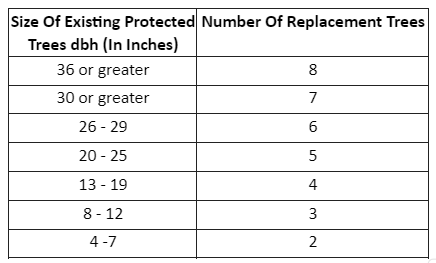Use this tool to draft important tree protections in your community for a strong urban forest.
Trees are a useful and important part of the infrastructure in your community’s long-term development. Like other infrastructure, such as roads and buildings, trees require proper planning and maintenance. Unlike other critical infrastructure however, healthy, properly planted and cared for trees actually accrue value over time, and the benefits they provide increase exponentially as they mature. Older trees, especially in forested areas, provide multiple public benefits from improved air quality, sequestering of carbon, offsetting of carbon emissions, removal of air pollutants, reduction of heat islands, critical wildlife habitat, water retention, and flood management. Trees can help improve the physical and mental health in communities. Plus, trees can provide many benefits for your community’s economic development, as summarized in the article “The Benefits of Trees for Livable and Sustainable Communities” by Jessica B. Turner-Skoff (July 8, 2019). Research shows that trees can:
- provide a high return on investment.
- support tourism.
- reduce energy use and bills.
- increase home prices and rental rates.
- reduce the rate of aging of road and pavement surfaces.
- influence shoppers to visit a shopping area.
- improve mental and physical health of citizens.
- decrease crime and improve social capital.
As communities expand and develop, it’s important to maximize your community’s resources for sustainable and long-term growth. Implementing tree protections into a development code is one way to ensure that future generations will enjoy the many benefits of trees, while balancing the benefits of development.
This guide contains examples of, and recommendations for, different key components related to trees and their protections, as well as for other green infrastructure commonly found in zoning or development ordinances. These recommendations differ from standard Tree Protection Ordinances that protect your community’s trees 24/7, 365 days a year. In its most basic form, tree protections in development or landscape code:
- are triggered by a building permit or other mechanism, such as a concept plan, implying new construction;
- protect existing trees from damage and unnecessary removal;
- delegate who has authority to enforce tree regulations and how; and
- stipulate the ways developers can minimize damage to trees through penalties and incentives.
Topics covered in this tool address many common situations; however, every context and situation is different, and communities using these guidelines must tailor them to their individual situations to be effective. It is important to understand that because the cited examples are drawn from a number of different communities and sources, they vary widely in their complexity, format, reliance on cross-references and provisions not included here, and use of terms, tenses and concepts. Due to those variances, careful construction of an ordinance is critical to ensure consistency of terminology and a cohesive final result. Support for the creation or updates to a tree ordinance is offered by the Chicago Region Trees Initiative (CRTI), free of charge, to communities located in Will, McHenry, DuPage, Cook, Lake, Kane, and Kendall Counties.
Always consult legal counsel when making updates to your community’s municipal code.
Acknowledgments
Funding was provided by The Morton Arboretum and the United States Department of Agriculture Forest Service through direction of the Illinois Department of Natural Resources Urban and Community Forestry Program.
Content was derived and developed using the following resources:
Chicago Region Trees Initiative ordinance templates.
Green Infrastructure Center. 2021. Planner’s Forest Toolkit: A Guide for South Carolina’s Towns, Cities and Counties. South Carolina Forestry Commission, Urban and Community Forestry Program.
International Society of Arboriculture, Guidelines for Developing and Evaluating Tree Ordinances. 2001.
Miller, R.W., Hauer, R., and Werner, L. 2015. Urban Forestry Planning and Managing Urban Greenspaces, Third Edition. Long Grove,, IL: Waveland Press.
Swiecki, T.J. and E.A. Bernhardt., E.A. 2001. Guidelines for Developing and Evaluating Tree Ordinances [PDF file]. Retrieved from https://wwv.isa-arbor.com/education/onlineresources/treeordinanceguidelines,
University of Florida. 2005. Landscape Design.
CRTI would like to thank the Chicago Metropolitan Agency for Planning, the CRTI Trees and Green Infrastructure Work Group and Attorney Michael Marrs at Klein, Thorpe, and Jenkins Ltd. for thoughtful input and contributions to this project.
The Morton Arboretum is an equal opportunity provider.
